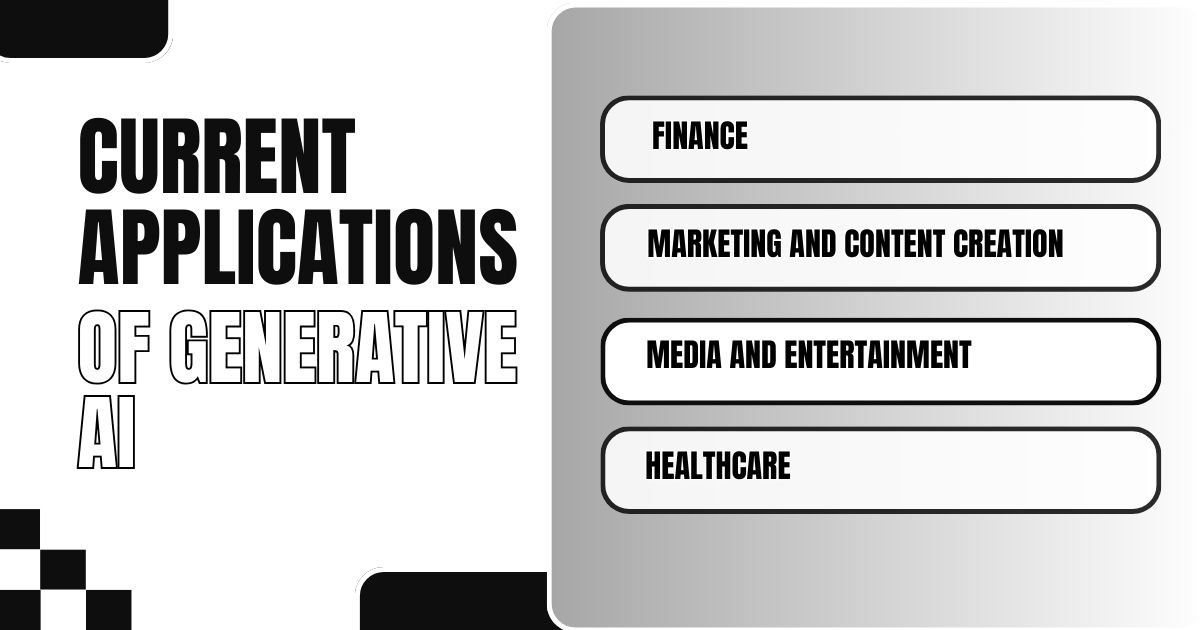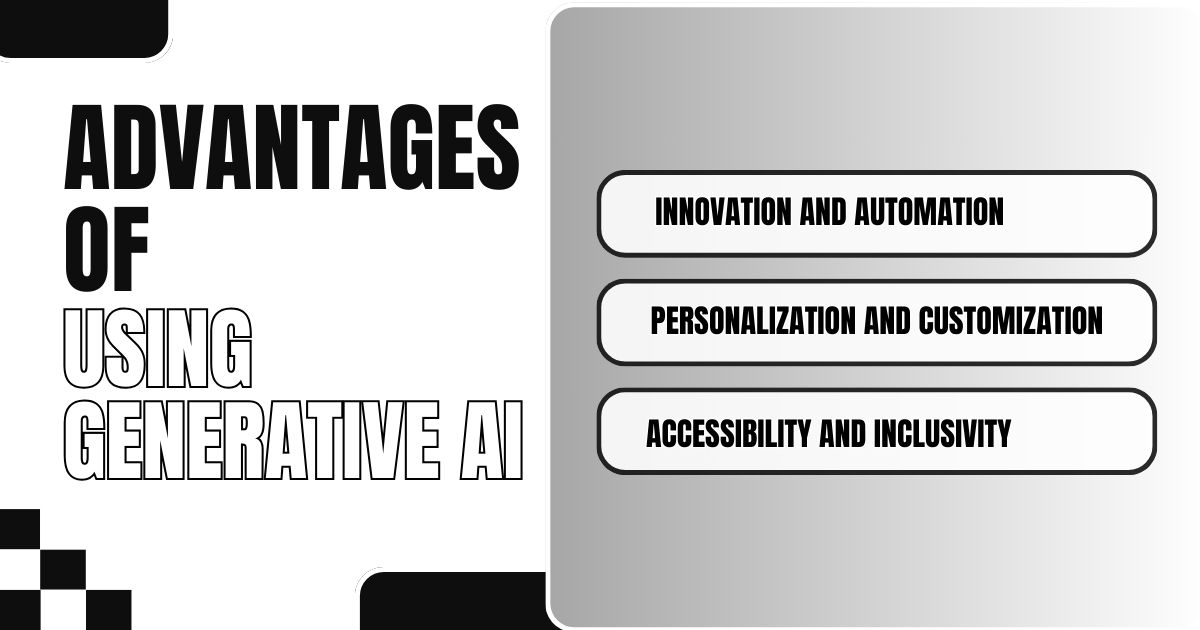Do you feel it's getting harder to keep up with the demand for new content or creative solutions? You’re not alone. Many businesses face this same struggle, and finding an effective way to stay ahead can seem overwhelming.
Generative AI has emerged as a powerful tool that could reshape your workflow. But how does it work, and what benefits can it bring your business? Stick around, because the answers might transform your approach to success in ways you never imagined.
What is Generative AI?
Generative AI is a type of artificial intelligence that produces new content, like text, images, audio, and video, by learning from existing information. Unlike traditional AI, which mainly analyzes data, generative AI uses advanced algorithms to create original content that resembles human creativity.
Key technologies behind generative AI include Generative Adversarial Networks (GANs), Variational Autoencoders (VAEs), and transformer-based models such as GPT-4.
Additionally, generative AI can engage in natural conversations and serve as a valuable tool for customer service and personalizing experiences. For instance, you can use AI-powered chatbots, voice bots, and virtual assistants that provide accurate responses to resolve customer inquiries at the first point of contact.
Current Applications of Generative AI

Generative AI is changing many industries by creating new content and improving processes. Its applications include the following:
Finance
The finance industry is using generative AI to help catch fraud, automate trading, and personalize customer services. AI can analyze large amounts of financial data to spot fraud quickly.
It also creates synthetic data, which allows banks and financial companies to train their AI without sharing sensitive information. Plus, it can generate personalized financial advice and product recommendations based on what each customer needs, making customers happier.
Marketing and Content Creation
Generative AI is changing marketing by making it easier to create content and improve how businesses interact with customers. Tools like GPT-4 can write high-quality articles, social media posts, and ads designed for specific audiences.
AI can also make images and videos for ads, creating eye-catching and engaging content. This automation saves time and ensures that marketing is both consistent and creative.
Media and Entertainment
Generative AI is changing the way movies and videos are made. Companies like Runway have created AI tools that can produce high-quality videos. These tools help filmmakers make realistic special effects, make actors look younger, and sync their lips to different languages very accurately.
Big studios like Paramount and Disney are using these technologies to make their storytelling better and to speed up the editing process.
Healthcare
In healthcare, generative AI is improving how doctors diagnose patients, customize treatments, and conduct medical research. AI can look at medical images like X-rays and MRIs to find problems with great accuracy. It’s also used to mimic complex biological processes and predict how new medicines will work, which helps speed up the process of discovering new drugs.
Additionally, generative AI can create fake medical data to help train AI systems without risking patient privacy.
Best Practices for Using Generative AI

Implementing generative AI effectively requires following best practices to ensure ethical use and optimal performance. It is an essential strategy for managing data, fostering collaboration, and maintaining the accuracy of AI systems.
Ethical Considerations
Using generative AI brings up important ethical questions, especially about data privacy, bias, and misinformation. It's important to create strong guidelines to ensure that AI systems are developed and used responsibly. This means checking AI models for biases, making AI decisions clear, and following data privacy laws.
Data Management
Good data management is key to making generative AI projects successful. Organizations should focus on collecting and organizing high-quality data to train AI models accurately. Having a variety of data helps reduce bias and makes AI systems more reliable. Also, using synthetic data generated by AI can help improve real-world data and protect privacy.
Collaboration and Integration
Working together with universities and industries is essential for improving generative AI technologies. Joint research can lead to new AI models and applications. To use AI tools effectively in existing work processes, organizations need to plan carefully and coordinate across different departments. It’s also important to train employees to work well with AI systems.
Continuous Monitoring and Improvement
Generative AI models should be checked and updated regularly to keep them accurate and relevant. Using feedback allows AI systems to learn from new information and adapt to changes. Regularly checking how well AI models perform can help find areas for improvement and ensure that they stay effective and reliable.
Advantages of Using Generative AI

Generative AI is changing how we create content, come up with new ideas, and automate tasks. Here are some of the main benefits of using AI.
Innovation and Automation
Generative AI can help turn your ideas into reality, even if you don’t know much about technology. For example, it can create code snippets for your projects and quickly find answers to your questions, allowing you to focus on being creative instead of getting stuck in technical details.
You can also use AI to brainstorm new ideas. Plus, it can handle boring and repetitive tasks, so you can spend more time on important and fun projects.
Personalization and Customization
Generative AI can customize content to fit your likes and preferences. In the entertainment industry, it helps create scripts, design characters, and produce shows that appeal to different audiences. The fashion industry also uses AI to make personalized designs and styles that meet specific customer needs.
Accessibility and Inclusivity
Generative AI makes it easier for everyone to enjoy content and feel included. It can write from different perspectives, helping to break down barriers. This technology allows all people, including those who may not be tech-savvy or have disabilities, to join in the creative process.
For instance, people with visual impairments can use voice-to-text tools to engage with written content, while those with mobility issues can use voice commands to navigate websites. Additionally, AI can improve website accessibility by adding descriptions and suggesting better navigation options.
Transform the Way You Work Today
Generative AI is no longer something from the future—it's already changing the way we work, create, and solve problems. Many businesses are using it to stay ahead by automating tasks and creating more personalized experiences. Whether it's writing content, designing new products, or helping with customer service, this technology can help you work smarter and faster.
If you're looking to take advantage of this powerful tool, Swiss Knife AI can help. With advanced AI solutions, SwissKnifeAi uses multiple AI models to summarize content, eliminate duplication, and compare responses—saving you time and improving accuracy in your work.
The possibilities are endless, and now is the perfect time to start. What will you create with Swiss Knife AI by your side?
FAQs
What is the difference between AI and generative AI?
AI refers to a broad field of computer science focused on creating systems that can perform tasks typically requiring human intelligence. Generative AI is a specific subset of AI that can create new content, such as text, images, and music, by learning from existing data.
What are the pros and cons of generative AI?
The pros of generative AI include its ability to automate creative processes, customize content for individual users, and increase efficiency in various tasks. However, the cons may involve concerns about data privacy, the potential for creating misleading information, and the need for careful oversight to prevent bias.
How does generative AI compare to traditional AI?
Generative AI differs from traditional AI in that traditional AI often focuses on analyzing and interpreting data rather than creating new content. While traditional AI is used for tasks like data classification and prediction, generative AI can produce original works that mimic human creativity.
What are the job duties and responsibilities of a generative AI professional?
A generative AI professional typically has responsibilities such as developing and implementing AI models, analyzing data to improve content generation, collaborating with creative teams, and ensuring ethical use of AI technologies. They must also stay updated on advancements in the field to enhance their skills and the effectiveness of their projects.


Leave a comment